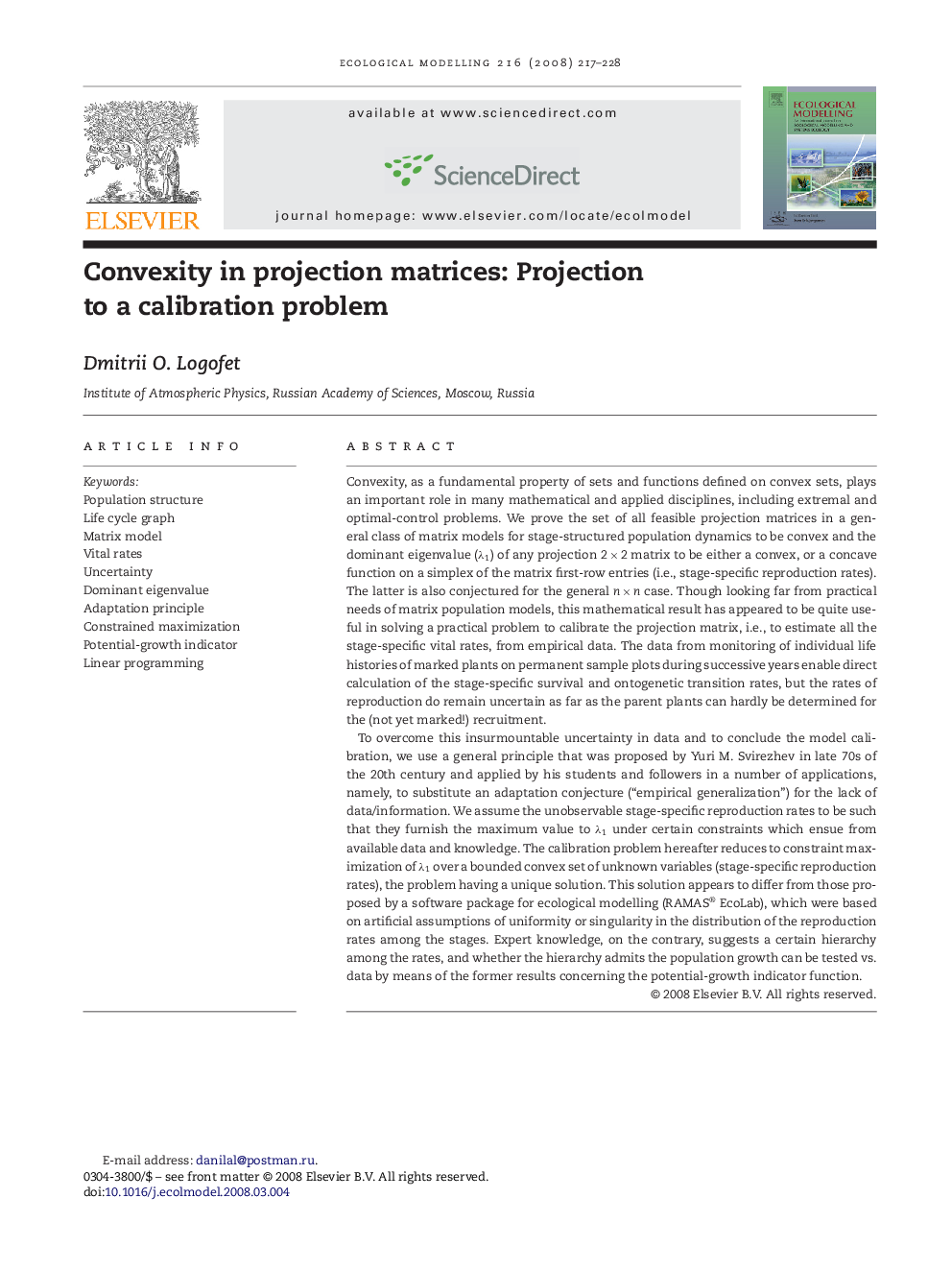| کد مقاله | کد نشریه | سال انتشار | مقاله انگلیسی | نسخه تمام متن |
|---|---|---|---|---|
| 4378065 | 1303460 | 2008 | 12 صفحه PDF | دانلود رایگان |

Convexity, as a fundamental property of sets and functions defined on convex sets, plays an important role in many mathematical and applied disciplines, including extremal and optimal-control problems. We prove the set of all feasible projection matrices in a general class of matrix models for stage-structured population dynamics to be convex and the dominant eigenvalue (λ1) of any projection 2 × 2 matrix to be either a convex, or a concave function on a simplex of the matrix first-row entries (i.e., stage-specific reproduction rates). The latter is also conjectured for the general n × n case. Though looking far from practical needs of matrix population models, this mathematical result has appeared to be quite useful in solving a practical problem to calibrate the projection matrix, i.e., to estimate all the stage-specific vital rates, from empirical data. The data from monitoring of individual life histories of marked plants on permanent sample plots during successive years enable direct calculation of the stage-specific survival and ontogenetic transition rates, but the rates of reproduction do remain uncertain as far as the parent plants can hardly be determined for the (not yet marked!) recruitment.To overcome this insurmountable uncertainty in data and to conclude the model calibration, we use a general principle that was proposed by Yuri M. Svirezhev in late 70s of the 20th century and applied by his students and followers in a number of applications, namely, to substitute an adaptation conjecture (“empirical generalization”) for the lack of data/information. We assume the unobservable stage-specific reproduction rates to be such that they furnish the maximum value to λ1 under certain constraints which ensue from available data and knowledge. The calibration problem hereafter reduces to constraint maximization of λ1 over a bounded convex set of unknown variables (stage-specific reproduction rates), the problem having a unique solution. This solution appears to differ from those proposed by a software package for ecological modelling (RAMAS® EcoLab), which were based on artificial assumptions of uniformity or singularity in the distribution of the reproduction rates among the stages. Expert knowledge, on the contrary, suggests a certain hierarchy among the rates, and whether the hierarchy admits the population growth can be tested vs. data by means of the former results concerning the potential-growth indicator function.
Journal: Ecological Modelling - Volume 216, Issue 2, 24 August 2008, Pages 217–228